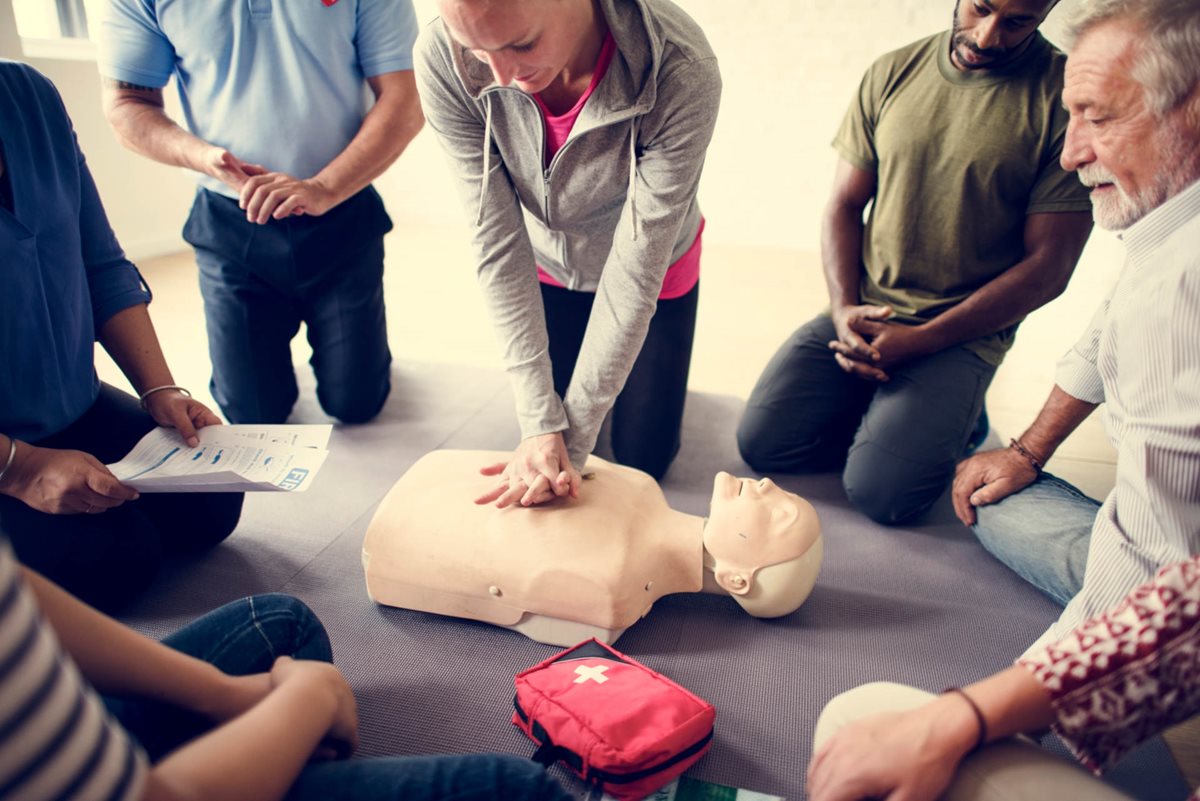A company’s greatest assets are its employees, which is why every company should have an effective HR department that believes in the development of its employees. Investing in CPR and first-aid training for its staff not only shows the good intentions of the business to meet their legal and ethical obligations toward their employees by providing a safe workplace environment but also supports the extra-curricular activities of their employees to develop different skills.
To minimize disruption in the workplace or legal action due to an employee injury suffered on site, employers should ensure that each worker is well-trained in CPR and first-aid.
1. Creates a more positive and safe work environment
Employees face all types of hazards whilst at work, so providing a safe work environment is an essential characteristic of a healthy workplace. By sponsoring first-aid and CPR training classes, businesses can show their workforce that they care about creating a safe workplace.
It also shows the company’s willingness to invest in its employees. When employees feel valued, they’re more productive and their morale is generally higher.
The goal of every business should be to create a safe and positive work environment. First-aid and CPR training will ensure employees’ health and safety, as well as provide substantial value to the workers and the company.
2. Faster response times during a medical emergency
While most companies sponsor OSHA training seminars for their employees, many of these businesses actually neglect to incorporate first-aid and CPR drills in these training sessions. This oversight leaves the American workforce grossly unprepared to respond to medical emergencies in a timely manner or to manage on-the-job medical crises until the emergency services arrive. A quick medical response during a workplace accident can lessen the chance of an injured worker losing his or her life.
When employees are trained in first-aid and CPR techniques, they understand what needs to be done during a medical emergency. These employees possess the confidence and critical skills needed to effectively deal with an emergency.
3. Provides employees with transferable skills
Employees who reside or work in remote areas don’t have immediate access to medical clinics or hospitals, so they must rely on basic life-saving techniques during medical emergencies.
Employees who embark on a CPR or first aid course will learn more than just simple techniques; they will understand how to use basic medical equipment, properly bandage cuts, and resuscitate someone who has lost consciousness.
These types of skills are applicable in all areas of life and can go a long way to help save the lives of community or family members outside of work.
4. Satisfies legal and moral obligations
According to the Bureau of Labor Statistics and the Occupational Safety and Health Administration, thousands of people are injured in workplace accidents every year. From a legal standpoint, federal laws require that every business provide an adequate degree of first-aid care on site. These requirements include placing a well-stocked first aid kit in an unobstructed common area, supplying information and resources to employees about first-aid provisions, and designating one or two individuals as onsite “first-responders” in case an employee suffers a serious injury.
Employers whose businesses operate large machinery or process hazardous materials often sponsor additional basic emergency training in case of a more serious accident. These businesses rank among the highest for injuries and fatalities, so they make it a priority to stay up-to-date on the latest methods to reduce workplace accidents. Minimizing hazardous risks and reducing injuries to workers is a benefit to everyone from both an ethical and legal standpoint.
In conclusion
Employers who overlook providing first-aid and CPR training to their employees inadvertently create more problems for their businesses. Not only does training guarantee that workplace medical emergencies will be handled effectively, but it also meets federal guidelines. Training employees can mean the difference between life and death, but it also shows that employee wellbeing is valued above company profits.
Access the latest business knowledge in HR
Get Access




Comments
Join the conversation...